
Alan: I do not warm to conspiracy theories.
Rather, I think human beings find it very difficult to keep secrets especially when "spilling the beans" would result in a juicy news item, media lionization and likely fortune.
Rather, I think human beings find it very difficult to keep secrets especially when "spilling the beans" would result in a juicy news item, media lionization and likely fortune.
Fortunately, most supposed conspiracies -- for example, the belief that 9/11 was an inside job -- require so many co-conspirators that surely someone will break silence.
What gave me pause in the following Amy Goodman interview with Harvey Wasserman is that computerized manipulation of electronic voting machines could take place from "Oz's inner sanctum" with the involvement of only 2 or 3 people.
At the same time, it seems difficult to manipulate precinct level results made by local officials in the presence of one another.
If precinct tallies do not square with Mission Control's final tally, then any significant discrepancy between these two tallies would stink to high heaven.
If precinct tallies do not square with Mission Control's final tally, then any significant discrepancy between these two tallies would stink to high heaven.
Or perhaps it's nothing more than my own lack of computer smarts that prevents me from knowing how easily precinct results could be manipulated by Mission Control as soon as precinct polls close - and before local precinct tallies is taken.
One way or another, it would be wise to insure that every voting machine provide a non-digital "paper trail" so that "spot checking" 2% to 5% of all precincts -- comparing their paper totals with the cumulative digital tolls made by statewide officials -- would immediately reveal any funky discrepancy.
Harvey Wasserman of Columbus, Ohio, has been a vocal critic of electronic voting machines. He co-wrote the book, "What Happened in Ohio: A Documentary Record of Theft and Fraud in the 2004 Election." His upcoming book is titled "The Strip & Flip Selection of 2016: Five Jim Crows & Electronic Election Theft." We talk to him about his concerns for the upcoming presidential race.


AMY GOODMAN: We’re in Westerville, Ohio, just outside Columbus. We’re at Otterbein University, where I’ll be teaching some classes today, or, let’s say, talking with students. We’re at OTV, which is Otterbein Television. And, Harvey Wasserman, I wanted to talk to you now about voting machines—
HARVEY WASSERMAN: Right.

AMY GOODMAN: —and your concern over the years that electronic voting could be used to steal elections. Are you still concerned about this?
HARVEY WASSERMAN: Well, electronic voting was used to steal the presidential election right here in Ohio in 2004. John Kerry was the rightful winner in 2004 over George W. Bush. The secretary of state at the time, J. Kenneth Blackwell, and the governor, Robert Taft, used their power of electronic vote count to flip the vote to George W. Bush from John Kerry.
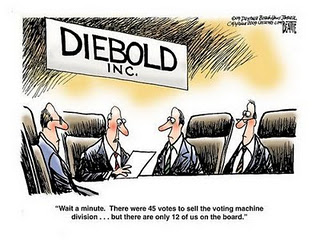
AMY GOODMAN: How do you know this?
HARVEY WASSERMAN: We watched it—I grew up here, Amy. We watched it, totally, right up close and personal. We did the accounting. I work with a political scientist named Bob Fitrakis. We’re about to come out with another book, The Strip & Flip of the 2016 Selection. They are stripping the voter rolls—and Greg Palast, the great investigative reporter, is doing great on this—removing African Americans, Hispanics, people who might incline to vote progressive, and they—so that—in 2004, they stripped 300,000 people from the voter rolls here in the urban areas. Bush only won by less than 120 [thousand].
And this year, about 80 percent of the vote nationally will be cast on electronic voting machines. There is no verifiability. In six key swing states—Florida, North Carolina, Ohio, Michigan, Iowa and Arizona—you have Republican governors and Republican secretaries of state, and no method of verifying the electronic vote count. At midnight or whenever it is on election night, those two guys can go in there with an IT person and flip the outcome of an electronically counted vote within about 60 seconds. So all this millions and millions of dollars, people out campaigning and so on, can be negated by an electronic vote flip late at night on election night, and there is no way to verify what’s happened.

Pax On Both Houses: Compendium Of Voter Fraud And Voter Suppression Posts
AMY GOODMAN: They didn’t do this with President Obama in 2008.
HARVEY WASSERMAN: They did. He had too many votes; he was too far out. They couldn’t—it would have taken them too many, to flip too many states. [inaudible] believe Obama won by well over 10 million votes. The last—the final vote count was in—official, was in 7 or 8 million.


AMY GOODMAN: But what gives you this idea?
HARVEY WASSERMAN: Because we’ve seen it happen. When you compare exit polls, which are generally accurate to within 1 percent, with the electronic outcome, there are huge variations. And we have documented many dozens of different things that they have done over the years to flip electronic votes.


AMY GOODMAN: How does e-voting, electronic voting, work? And who controls the controls on it?
HARVEY WASSERMAN: Well, that’s the key. The electronic voting machines are owned by private corporations, which are Republican in orientation, generally. And the courts have ruled that the source code on these electronic voting machines is proprietary. So, even the governments that buy or lease these machines have no access to a final verification process. Even Ronald Reagan said, "Trust, but verify." And we know that the vote count was flipped in 2004. We know it was flipped in Volusia County in 2000.
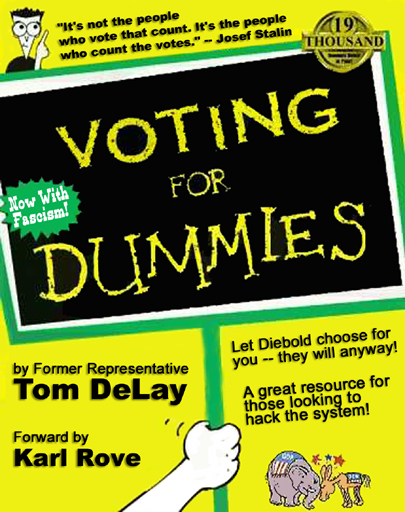

AMY GOODMAN: Where is Volusia County?
HARVEY WASSERMAN: In Florida, when Al Gore basically was the rightful winner, and George W. Bush won the election. I mean, the only great—


AMY GOODMAN: And they were electronic voting machines?
HARVEY WASSERMAN: In Volusia County, they were, yes. In the southern part of Florida, they used butterfly ballots, as you’ll recall. The only good thing we can say about George W. Bush is the American people never actually elected him president. And we’re looking now at 2016, at an election that will be very easily flipped, in those six key swing states and elsewhere.


AMY GOODMAN: What do you think is the answer?
HARVEY WASSERMAN: We have to have universal, hand-counted paper ballots. And Bernie Sanders has endorsed that. We have to have automatic voter registration, where people can monitor the registration rolls, because people are being stripped from the registration rolls, mostly, of course, African-American and Hispanic. But this year, we’re not going to get that. And this year, it’s going to be very, very difficult, in a close election, to monitor exactly what happens, because these are black boxes. We have a wonderful actress named Bev Harris, who’s been working with Greg Palast and others, who has shown, in black box voting, that the public has no real access, no verification process for the electronic votes. And so we’re going through this huge charade here of a national campaign, primaries and then a general election, where hundreds of millions of dollars will be spent, and on election night, in 60 seconds, the actual outcome can be flipped electronically in key swing states with no verification whatsoever.


AMY GOODMAN: If there are electronic voting machines everywhere, which there are now, right?
HARVEY WASSERMAN: Pretty much, yes.
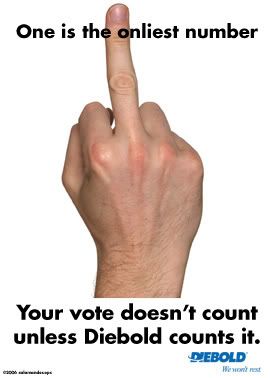

AMY GOODMAN: How do you think they can be protected, people can be sure that their vote is counted, that they cast, even using electronic voting machines?
HARVEY WASSERMAN: They can’t be. You cannot verify an electronic voting machine. They are privately owned by private corporations, and the proprietary software prevents the public from getting access to the actual vote count. We’re going into a national election, and not just the presidency, but Senate seats, House seats. We believe three Senate seats in 2014 were stolen—in North Carolina, Colorado and Alaska—that the Republicans do not have a legitimate 54-seat, or whatever it is, majority in the Senate. And this will happen again. It’s not just the presidency. And we’ve been—we have written seven books about this, Bob Fitrakis and I, from our experience here in Ohio in 2004. And again, we have a Republican governor, Republican secretary of state, no verifiability on the electronic vote count. It will be arbitrary, when push comes to shove, on—midnight, 1:00 on election night—what the outcome will be.


AMY GOODMAN: Why do you think just Republicans would do it?
HARVEY WASSERMAN: Oh, no, Democrats definitely do it. I have—we have strong questions about Rahm Emanuel being re-elected in Chicago, for example. We have no doubt that Scott Walker stole his re-election in Wisconsin.
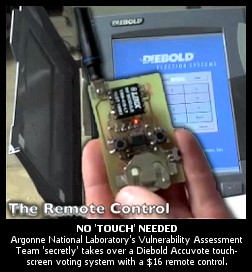

AMY GOODMAN: Based on what?
HARVEY WASSERMAN: Based on the miraculous discovery of several thousand votes in a so-called glitched computer voting machine that gave him a victory where it was clearly a defeat. You know, this is stuff that’s been going on a long time. These methods were perfected more or less overseas by the CIA and other covert and overt operations. They came back. It started in 1988 with George H.W. Bush using electronic voting machines in New Hampshire to beat Bob Dole in the 1988 primary. And we have seen since then the use of electronic voting machines all across the country to flip elections after they have stripped the voter rolls. And, you know—

Poof!
AMY GOODMAN: When you say "stripping the voter rolls," you mean?
HARVEY WASSERMAN: Yes, well, Greg Palast has reported on this. In Florida 2000, 90,000 mostly black and Hispanic voters were stripped out of the voter rolls before the election, in a vote count that was won by 600 votes. And in Ohio 2004, 300,000 voters in primarily urban areas were stripped off the voter rolls. People showed up to vote in the same precinct—as did I, by the way—they were—I was denied my absentee ballot, and we had a federal lawsuit on this, which we won and went nowhere after that.
But the reality is that we are voting in black boxes and that the governors and secretaries of state of these key swing states—but wherever you have a governor and secretary of state from the same party, be they Democrat or Republican, they have the power, under the electronic voting system, to flip the outcome of an election, with no verifiability, because the courts have ruled that these privately owned voting machines have proprietary software. It’s a nightmare. And it’s not democracy. I mean, Bernie Sanders has shown that the election—that the campaign finance is rigged, that the economy is rigged. Why wouldn’t they take the very small next step to rig the electronic voting machines?
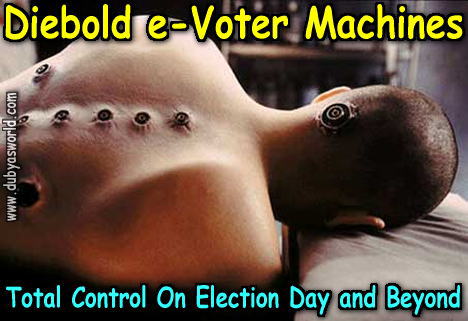

AMY GOODMAN: Well, we’re going to leave it there for right now, Harvey Wasserman, independent journalist, longtime anti-nuclear activist. His recent article for the WorldBeyondWar.org is "Why the Deafening Silence on Cutting the Military Budget?" His upcoming book is called The Strip & Flip Selection of 2016: Five Jim Crows & Electronic Election Theft.
This is Democracy Now! We’re broadcasting from Ohio. When we come back, we’re going to look at private prisons here. Stay with us.




No comments:
Post a Comment